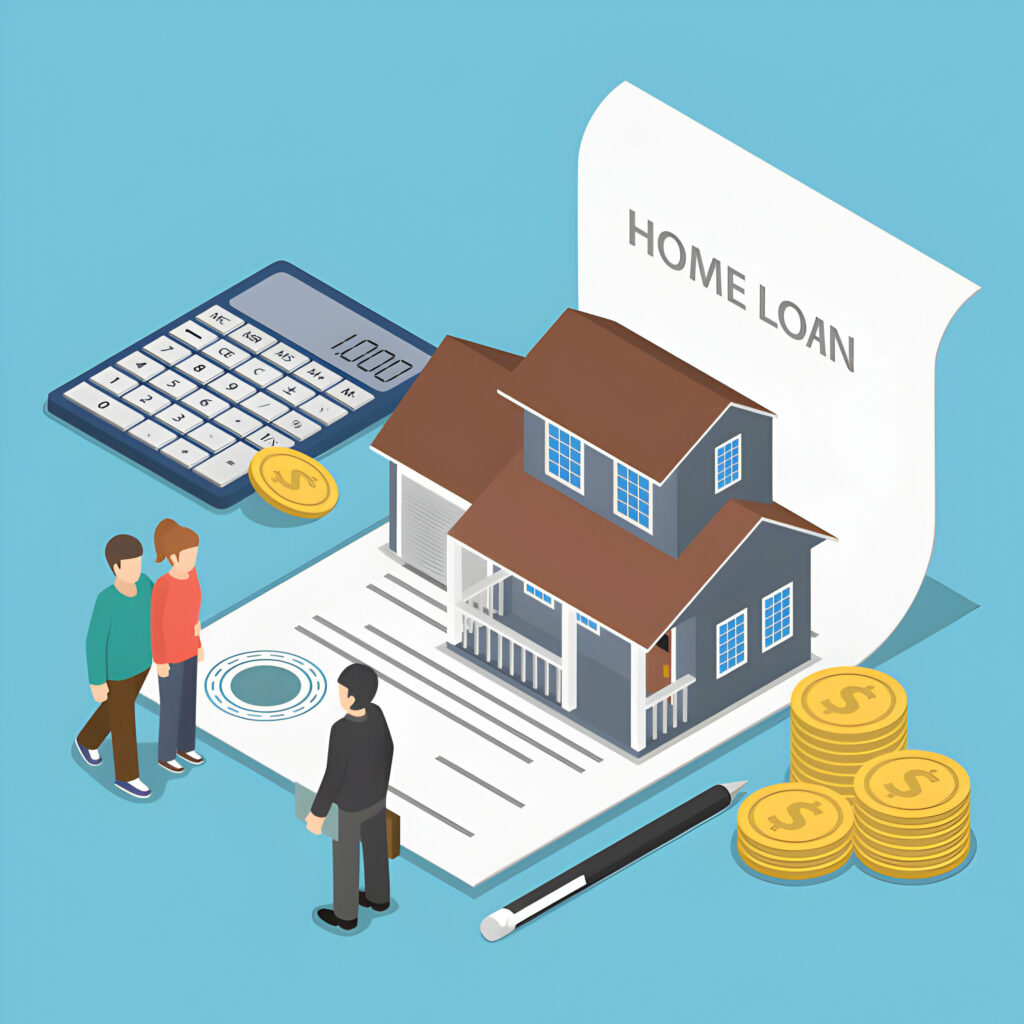Navigating Mortgage Interest: A Comprehensive Guide to Understanding and Managing Your Home Loan Costs

Mortgage interest is a key element in the home-buying process, impacting the total amount you’ll spend on your home and your monthly payments.
This comprehensive guide aims to deepen your understanding of mortgage interest, exploring how it affects your finances and offering strategies to manage it effectively.
Let’s further explore the nuances of mortgage interest, including interest-only mortgages, jumbo loans, and the implications of mortgage insurance.
Interest-Only Mortgages: An Overview
Interest-only mortgages offer a unique financing option for homebuyers, characterized by payments that cover only the interest on the loan amount for a predetermined period.
This type of mortgage can be particularly appealing for certain types of borrowers due to its initial lower monthly payment structure. Here’s an in-depth look at interest-only mortgages, their benefits, potential risks, and ideal candidates.
How Interest-Only Mortgages Work
In an interest-only mortgage, the borrower is required to pay only the interest on the loan for a set period, typically 5 to 10 years. During this phase, the principal balance remains unchanged, and the monthly payments are lower because they don’t include principal repayment.
After the interest-only period ends, the mortgage converts to a standard amortizing loan, and the borrower begins to pay off the principal, often resulting in a significant increase in monthly payments.
Benefits of Interest-Only Mortgages
- Lower Initial Payments: The most significant advantage is the lower monthly payment during the interest-only period, which can help borrowers manage cash flow more effectively, especially if they have irregular income sources.
- Flexibility: Borrowers can choose to pay more than the interest if they wish, which will reduce the principal balance, though not required during the interest-only period.
- Investment Strategy: Some borrowers may prefer to invest the money saved from the lower payments, potentially earning a return greater than the interest rate on their mortgage.
Potential Risks
- Payment Shock: Once the interest-only period ends, the monthly payments can increase substantially when the borrower starts to pay back the principal.
- Home Value Fluctuation: If the property value decreases, borrowers might find themselves owing more than their home is worth, particularly since they’re not building equity during the interest-only phase.
- Financial Planning: Borrowers who do not prepare for the higher payments after the interest-only period may face financial difficulties.
Ideal Candidates for Interest-Only Mortgages
- High-Income Earners: Those with high but irregular income (e.g., bonuses, commissions) who can afford the eventual increase in monthly payments.
- Investors: Individuals who plan to sell the property before the interest-only period expires, hoping to profit from home appreciation without paying towards the principal.
- Financially Savvy Borrowers: Those who have a disciplined investment strategy that outweighs the costs of the interest-only mortgage.
Considerations Before Choosing an Interest-Only Mortgage
- Financial Stability: Ensure that you can afford the higher payments once the interest-only period ends.
- Long-Term Goals: Consider whether you plan to stay in the home long-term or if you’re looking at it as an investment opportunity.
- Market Conditions: Be aware of current and projected housing market trends, as these will impact your home’s value and your ability to refinance or sell.
- Alternatives: Compare with other mortgage options to determine which best fits your financial situation and goals.
The World of Jumbo Mortgage Loans
A jumbo mortgage loan is any loan amount that surpasses the conforming loan limit. For 2023, the conforming loan limit for most areas in Canada is CAD 726,200, though it can be higher in certain high-cost areas. For more information you may refer to Canada Mortgage and Housing Corporation (CMHC).
Any mortgage exceeding these limits is considered a jumbo loan and is not eligible for purchase, guarantee, or securitization.
Characteristics of Jumbo Mortgage Loans
- Higher Loan Amounts: Jumbo loans enable borrowers to finance luxury properties and homes in competitive real estate markets where prices exceed the conforming loan limits.
- Stricter Qualification Requirements: Due to the higher loan amounts and increased risk to lenders, jumbo loans typically come with more stringent qualification criteria regarding credit scores, debt-to-income ratios, and cash reserves.
- Larger Down Payments: Borrowers may need to put down 20% or more of the home’s purchase price as a down payment, though some lenders may require less.
- Competitive Interest Rates: While jumbo loans used to come with higher interest rates than conforming loans, the gap has narrowed in recent years. In some cases, the rates may be comparable or even lower, depending on the lender and the borrower’s financial profile.
Benefits and Drawbacks Of Jumbo Mortgages : Following are some of the advantages and disadvantages of choosing Jumbo Mortgages
Benefits:
- Access to High-Value Properties: Jumbo loans make it possible for borrowers to finance homes that would otherwise be beyond their reach, expanding their options in the real estate market.
- Flexible Terms: Some lenders offer more flexible terms for jumbo loans, including adjustable-rate and fixed-rate options, to accommodate the financial needs of borrowers.
Drawbacks:
- Higher Costs: The larger loan amounts and potentially higher interest rates mean borrowers may pay significantly more over the life of the loan.
- Rigorous Approval Process: The stringent qualification criteria can make the approval process more challenging and time-consuming.
Ideal Candidates for Jumbo Loans
Jumbo loans are best suited for borrowers with stable, high incomes, solid credit histories, and significant cash reserves.
They are particularly appealing to those looking to purchase luxury homes, invest in high-cost real estate markets, or finance properties that exceed the conforming loan limits.
The Role of Mortgage Insurance
The Role of Mortgage Insurance (PMI) deeply explores the necessity, function, and implications of acquiring mortgage insurance within the context of home financing, particularly when a down payment is less than the standard 20% of the home’s purchase price.
This section aims to demystify the concept, highlighting how PMI affects borrowers and offering insights into navigating its costs effectively.
When is Mortgage Insurance Required?
Lenders typically require PMI on conventional loans when the down payment is less than 20%.
The reasoning behind this is straightforward: a smaller down payment indicates a higher loan-to-value (LTV) ratio, representing a greater lending risk. By requiring PMI, lenders mitigate their risk, allowing them to lend to a broader range of borrowers.
Cost of Mortgage Insurance
The cost of PMI can vary based on several factors, including the size of the down payment, loan amount, and borrower’s credit score. Generally, PMI costs range from 0.3% to about 1.5% of the original loan amount annually.
This cost is typically included in the borrower’s monthly mortgage payments, although there are options to pay it as a lump sum upfront or a combination of both upfront and monthly payments.
Impact on Monthly Payments
The addition of PMI to a mortgage payment can significantly increase the monthly amount a borrower owes. For example, on a CAD 200,000 loan with 1% PMI, the borrower could pay an additional CAD 166 per month.
This increase emphasizes the importance of considering the full cost of a mortgage, beyond just the principal and interest.
Strategies for Managing Mortgage Interest
Beyond choosing the right type of mortgage, there are several strategies you can employ to manage and reduce the cost of your mortgage interest:
- Make Extra Principal Payments
- Refinance to a Lower Interest Rate
- Refinance to a Shorter Term
- Consider a Bi-weekly Payment Schedule
- Use Windfalls to Make Lump Sum Payments
- Recast Your Mortgage
- Opt for a Mortgage with No Prepayment Penalty
- Monitor Your Credit Score
- Consider Loan Modification
- Stay Informed and Be Proactive
The Impact of Mortgage Points
Mortgage points, commonly referred to as discount points, are fees paid directly to the lender at closing in exchange for a reduced interest rate.
This practice, essentially a form of prepaid interest, can significantly impact the total cost of your mortgage, both in terms of upfront costs and long-term interest savings.
Understanding the intricacies of how mortgage points work and their long-term implications is crucial for borrowers considering this option as part of their mortgage strategy.
One mortgage point is equivalent to 1% of the loan amount. For example, one point on a CAD 300,000 loan would cost CAD 3,000. There are two types of points: discount points and origination points. While origination points are fees for the cost of obtaining a loan, discount points specifically reduce the interest rate. This discussion focuses on discount points, given their direct impact on mortgage interest.
The Immediate Impact: Upfront Costs
Purchasing discount points requires an upfront payment at closing but results in a lower interest rate. This immediate financial impact increases the closing costs of obtaining a mortgage but can lead to substantial savings over the life of the loan due to the reduced interest rate.
The decision to buy points should be based on an analysis of upfront affordability versus long-term savings.
Considerations and Variables
- Loan Term: The impact of mortgage points is more pronounced on longer-term loans, such as 30-year mortgages, because the interest rate reduction is applied over a more extended period.
- Future Plans: Your plans for the property can significantly influence the decision to buy points. If you anticipate selling the home or refinancing the mortgage before reaching the break-even point, purchasing points may not be cost-effective.
- Financial Situation: The decision to buy points should also consider your current financial situation and the potential benefits of using those funds elsewhere, such as paying down high-interest debt or investing.
Tax Implications of Mortgage Interest
In Canada, the tax implications of mortgage interest differ significantly from those in other jurisdictions where mortgage interest on a primary residence can often be deducted.
The Canadian tax system generally does not allow homeowners to deduct mortgage interest on their primary residence.
Non-Deductibility on Primary Residence
For most homeowners in Canada, the interest paid on a mortgage for their primary residence is not tax-deductible. This stands in contrast to some other countries where such interest can reduce taxable income. The rationale behind this policy is rooted in the principle of the Canadian tax system’s treatment of personal living expenses, where costs associated with personal use property, including homes, are not deductible.
Tax Deductibility in Investment Properties
The scenario changes when it comes to investment properties. If you own a property that you rent out, the interest paid on a mortgage for that property is typically considered a current expense.
This means it can be deducted from the rental income you earn, reducing the taxable amount. This deduction is allowed because the property is used to generate income, aligning with the Canadian tax system’s allowance for deducting expenses incurred to earn income.
The Smith Maneuver
A notable strategy for making mortgage interest tax-deductible in Canada is known as the Smith Maneuver. This involves converting a non-deductible interest mortgage for a primary residence into a deductible interest debt under specific conditions. Here’s a simplified overview of how it works:
- Home Equity Line of Credit (HELOC): Homeowners take out a HELOC using the equity in their primary residence.
- Investment: Funds from the HELOC are then invested in income-generating vehicles, such as stocks or mutual funds.
- Tax Deduction: The interest on the borrowed money from the HELOC, now used for investment purposes, becomes tax-deductible because it’s incurred to earn investment income.
The Smith Maneuver is complex and involves several steps and considerations, including the risk of investing borrowed money. It requires meticulous planning and advice from tax professionals and financial advisors to ensure compliance with Canadian tax laws and to assess its suitability for an individual’s financial situation.
Home Office Deductions
For self-employed individuals or those who work from home and meet certain criteria, a portion of the mortgage interest can be deductible.
If a home office qualifies as a principal place of business or is used regularly and exclusively for earning business income, then a proportionate share of the mortgage interest relative to the size of the home office space can be deducted against business income.
Future Trends in Mortgage Rates
Predicting future trends in mortgage rates involves understanding the complex interplay of economic indicators, central bank policies, inflation rates, and global financial market dynamics.
While specific predictions can be challenging due to the unpredictable nature of these factors, we can discuss the underlying elements that are likely to influence the direction of mortgage rates in the future.
- Economic Growth and Inflation
- Government Debt Levels
- Central Bank Policies
- Global Financial Markets
- Demographic Trends
- Climate Change and Environmental Policies
Conclusion
Mortgage interest plays a pivotal role in the overall cost of your home loan, but with the right knowledge and strategies, you can navigate this complex terrain to your advantage.
Whether through choosing the appropriate mortgage type, employing strategies to reduce interest payments, or leveraging tax benefits, there are numerous ways to manage and minimize the impact of mortgage interest on your finances.
By staying informed and proactive, you can turn the dream of homeownership into a financially savvy reality, ensuring that your mortgage supports your long-term financial goals.














